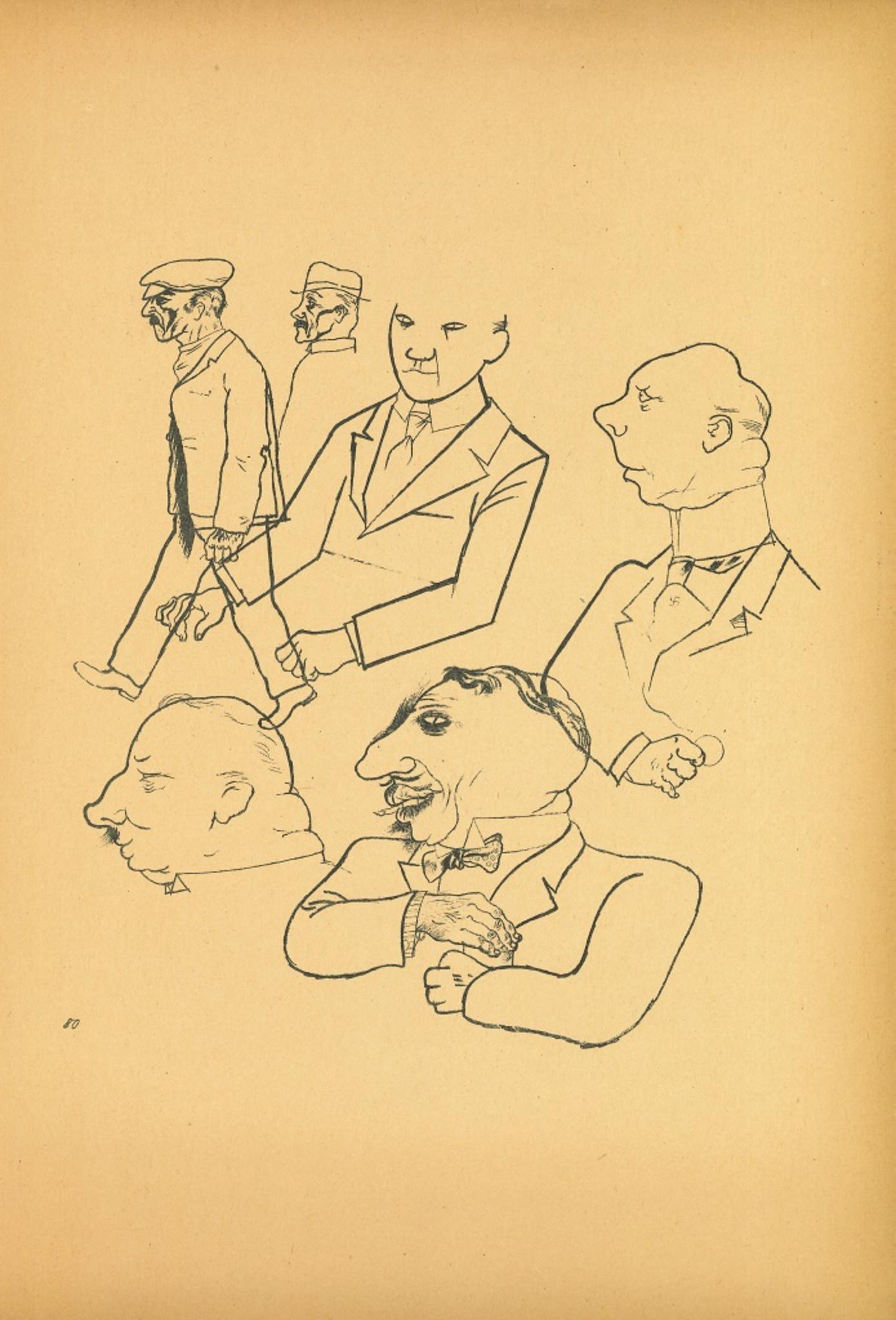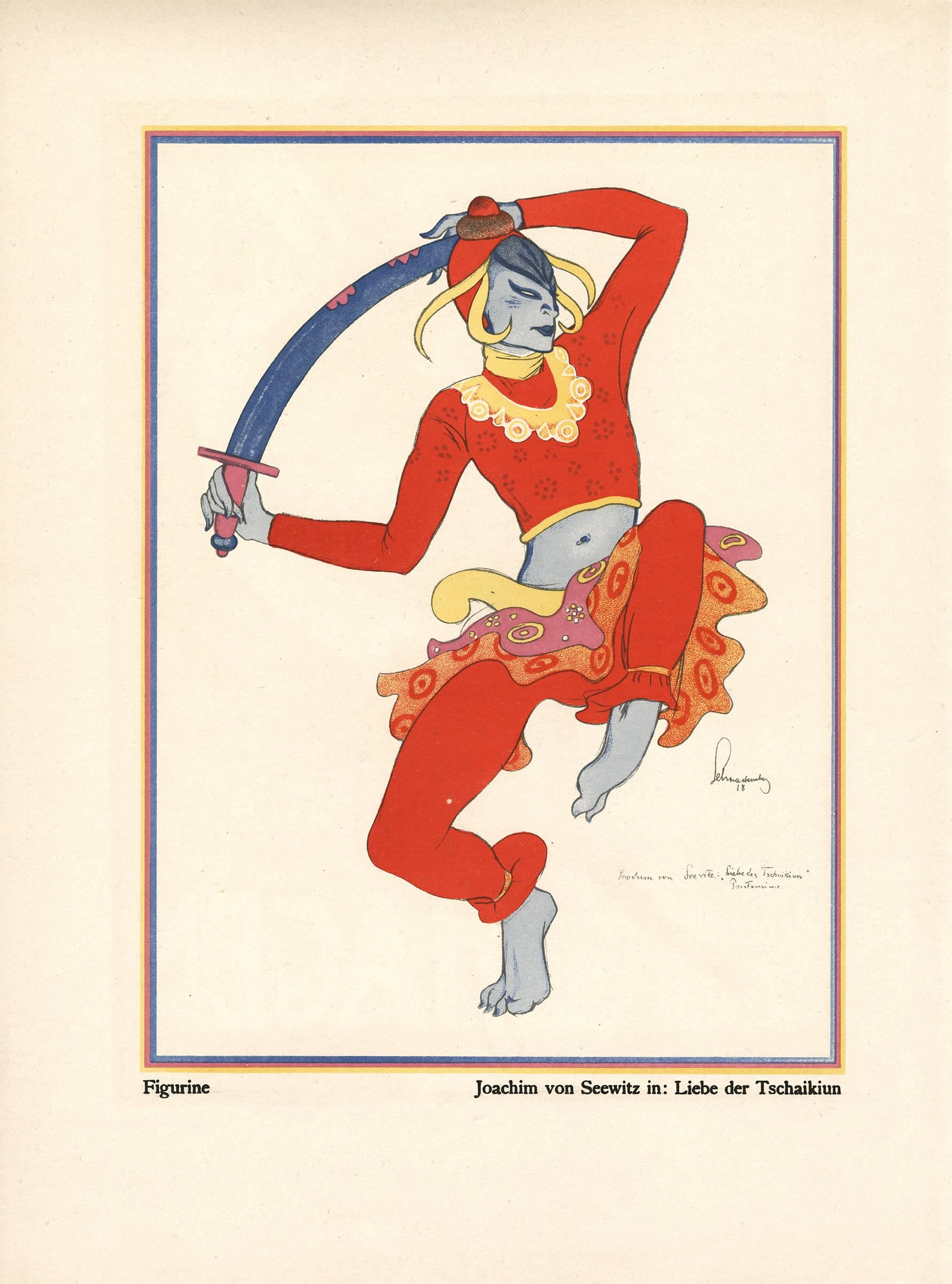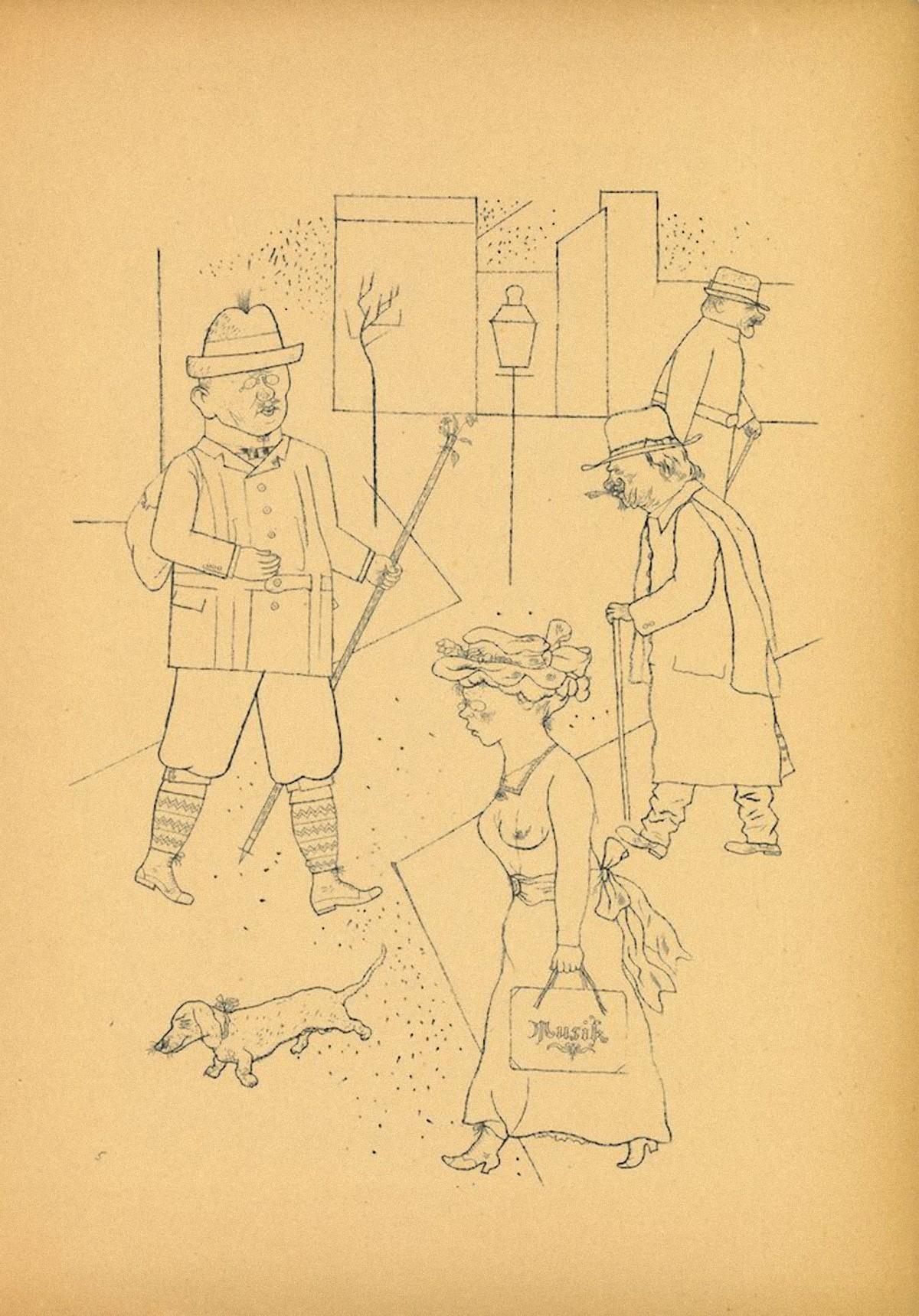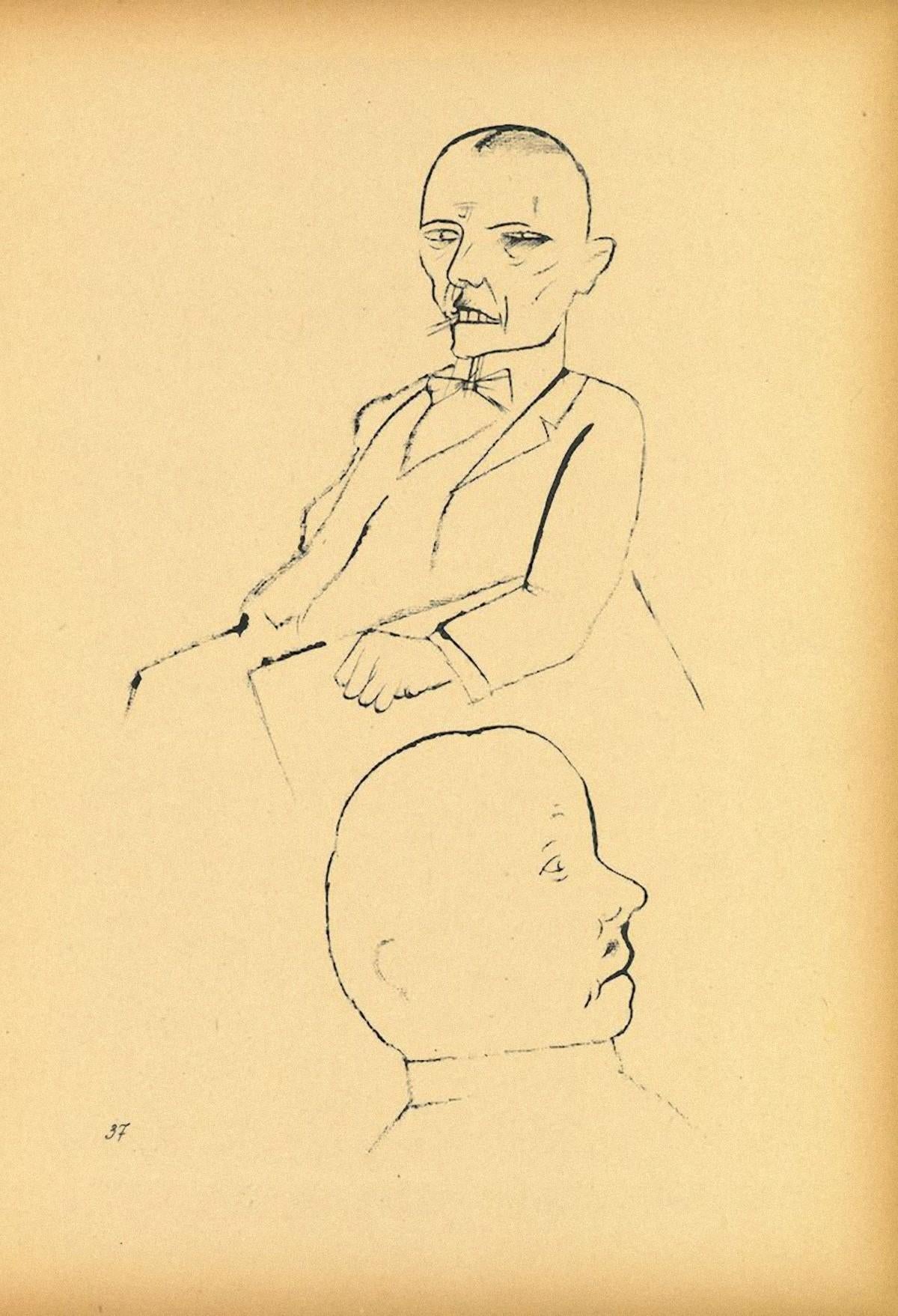Items Similar to Spanish Artist signed limited edition original art print lithography portrait
Want more images or videos?
Request additional images or videos from the seller
Antonio LopezSpanish Artist signed limited edition original art print lithography portrait1961
1961
About the Item
Antonio Lopez Garcia (Spain, 1936)
'Mujer de Tomelloso', 1961
lithograph on paper
11.9 x 13.8 in. (30 x 35 cm.)
Edition of 170
Unframed
ID: LOP2001-008
Hand-signed by author
- Creator:Antonio Lopez (1943 - 1987, Puerto Rican)
- Creation Year:1961
- Dimensions:Height: 11.9 in (30.23 cm)Width: 13.8 in (35.06 cm)
- Medium:
- Movement & Style:
- Period:
- Condition:
- Gallery Location:Miami, FL
- Reference Number:1stDibs: LU1854213310852
Antonio Lopez
Antonio (as he signed his work) was and remains one of the most highly regarded and influential figures in the fashion world. While not initially known as a photographer, Antonio was rarely without his favorite Instamatic camera, and as his career progressed he turned increasingly to photography to create fashion stories, portraits, and elaborate mise-en-scènes. This exhibition – the first to focus exclusively on Antonio’s photographs - features a selection of the unique Instamatic prints from the 1970s that were his photographic form. Developed and printed by Kodak, these prints were either mounted by Antonio or stored in the original yellow Kodak envelopes that the film was processed and delivered in. As Antonio never sent the negatives back for re-printing each print is unique. While primarily known for his fashion illustrations, Antonio did not treat his photographs lightly, assembling them in grids and pairs to create dynamic and visceral patterns. While the prints may superficially resemble Andy Warhol’s Polaroids because of their size and period, Antonio’s Kodak prints are a burst of energy to Warhol’s more classical studies. While Warhol’s Polaroids were mostly the basis for future painted portraits, Antonio’s photographs were an end to themselves. A serial Svengali, as the writer Karin Nelson noted: “Lopez brilliantly transformed the women in his world. Under his tutelage, Jerry Hall, a long tall Texan he met at Paris’s Club Sept, evolved into a golden goddess. He put Jessica Lange in gold lamé evening dresses after discovering her in Paris studying mime, and gave aspiring model Tina Lutz her start (and an introduction to future husband Michael Chow); and, by spotlighting Pat Cleveland, a mixed-race model with a theatrical streak, he helped break down the color barrier in high fashion.” Other favorite subjects were the young Grace Coddington, Grace Jones, and Paloma Picasso. Antonio Lopez was born in Utuado, Puerto Rico in 1943. His family moved to Spanish Harlem in 1950 where he showed early promise as an artist making drawings for his mother who was a seamstress and dressmaker. In the early 1960s he enrolled on a course at the Fashion Institute of Technology (FIT) in New York where he met Juan Ramos who became his life long collaborator. He joined The New York Times in 1963 but was soon freelancing for Harper’s Bazaar, British Vogue and French Elle. In 1969 he moved to Paris with Ramos where he was commissioned by all the leading fashion magazines. He returned to New York in 1975 creating numerous covers and picture stories for Andy Warhol’s Interview Magazine. Antonio died in Los Angeles 1987. He was forty four years old.
About the Seller
5.0
Vetted Seller
These experienced sellers undergo a comprehensive evaluation by our team of in-house experts.
Established in 2000
1stDibs seller since 2022
64 sales on 1stDibs
Typical response time: 1 to 2 days
- ShippingRetrieving quote...Ships From: Miami, FL
- Return PolicyA return for this item may be initiated within 14 days of delivery.
More From This SellerView All
- Pinchas Burstein ¨Maryan¨, "Untitled", 1975, Lithograph, 24.4x20.9 in n1By Pinchas MaryanLocated in Miami, FLPinchas Burstein ¨Maryan¨ (Polonia, 1927-1977) 'Sin título (azul)', 1975 Lithograph on paper 24.5 x 20.9 in. (62 x 53 cm.) Edition of 75 ID: BUR1102-...Category
1970s Expressionist Prints and Multiples
MaterialsPaper, Lithograph, Screen, Etching
- Pinchas Burstein ¨Maryan¨, "Untitled", 1975, Lithograph, 20.9x24.4 in n4By Pinchas MaryanLocated in Miami, FLPinchas Burstein ¨Maryan¨ (Polonia, 1927-1977) 'Sin título (carmín)', 1975 Lithograph on paper 20.9 x 24.5 in. (53 x 62 cm.) Edition of 75 ID: BUR110...Category
1970s Expressionist Prints and Multiples
MaterialsEtching, Lithograph, Paper, Screen
- Pinchas Burstein ¨Maryan¨, "Untitled", 1975, Lithograph, 24.4x20.9 in n3By Pinchas MaryanLocated in Miami, FLPinchas Burstein ¨Maryan¨ (Polonia, 1927-1977) 'Sin título (rosa)', 1975 Lithograph on paper 24.5 x 20.9 in. (62 x 53 cm.) Edition of 75 ID: BUR1102-...Category
1970s Expressionist Prints and Multiples
MaterialsEtching, Lithograph, Paper, Screen
- Pinchas Burstein ¨Maryan¨, "Untitled", 1975, Lithograph, 24.4x20.9 in n2By Pinchas MaryanLocated in Miami, FLPinchas Burstein ¨Maryan¨ (Polonia, 1927-1977) 'Sin título (verde)', 1975 Lithograph on paper 24.5 x 20.9 in. (62 x 53 cm.) Edition of 75 ID: BUR1102...Category
1970s Expressionist Prints and Multiples
MaterialsEtching, Lithograph, Paper, Screen
- Herve Telemaque, "L´oreille de Van Gogh", 1979, Engraving, 29.5x21.7 inBy Herve TelemaqueLocated in Miami, FL"Herve Telemaque (France, 1937-2022) 'L´oreille de v. Van Gogh', 1979 engraving on paper 29.6 x 21.7 in. (75 x 55 cm.) ID: TEL1361-001-000"Category
1970s Expressionist Prints and Multiples
MaterialsScreen, Engraving, Paper
- Herve Telemaque, "Joan Prats 1977", 1977, Engraving, 29.9x22 inBy Herve TelemaqueLocated in Miami, FL"Herve Telemaque (France, 1937-2022) 'Joan Prats 1977', 1977 engraving on paper 30 x 22.1 in. (76 x 56 cm.) ID: TEL1361-010-000"Category
1970s Expressionist Prints and Multiples
MaterialsEngraving, Paper, Screen
You May Also Like
- Men from Ecce Homo - Original Lithograph by George Grosz - 1923By George GroszLocated in Roma, ITMen from Ecce Homo is an original offset and lithograph realized by George Grosz. The artwork is the plate n. 80 from the porfolio Ecce Homo published between 1922/1923,edition of D...Category
1920s Expressionist Figurative Prints
MaterialsLithograph, Paper
- The Walk - Offset and Lithograph by George Grosz - 1923By George GroszLocated in Roma, ITThe walk is an original offset and lithograph, realized by George Grosz. The artwork is the plate n. 81 from the porfolio Ecce Homo published between 1922/1923,edition of Der Malik-...Category
1920s Expressionist Figurative Prints
MaterialsLithograph, Paper
- Kostume, Plakate, und Dekorationen, "Joachim von Seewitz"By Walter SchnackenbergLocated in Chicago, ILWalter Schnackenberg’s style changed several times during his long and successful career. Having studied in Munich, the artist traveled often to Paris where he fell under the spell of the Henri de Toulouse-Lautrec’s colorful and sensuous posters depicting theatrical and decadent subjects. Schnackenberg became a regular contributor of similar compositions to the German magazines Jugend and Simplicissimus before devoting himself to the design of stage scenery and costumes. In the artist’s theatrical work, his mastery of form, ornamentation, and Orientalism became increasingly evident. He excelled at combining fluid Art Nouveau outlines, with spiky Expressionist passages, and the postures and patterns of the mysterious East. In his later years, Schnackenberg explored the unconscious, using surreal subject matter and paler colors that plainly portrayed dreams and visions, some imbued with political connotations. His drawings, illustrations, folio prints, and posters are highly sought today for their exceedingly imaginative qualities, enchanting subject matter, and arresting use of color. SCHNACKENBERG: KOSTUME, PLAKATE UND DEKORATIONEN, a cardboard bound art book consisting of 43 prints of work by Walter Schnackenberg, 30 of which are color lithographs that are signed and some are titled and dated in the plate, as well as black and white prints and photographs with accompanying text by Oskar Bie; lithographs printed at Kunstanstalt Oskar Consee in Munich, other images printed by Gesellschaft Pick & Co. in Munich, the text and cover with color images by Schnackenberg front and verso printed by R. Oldenbourg in Munich; published by Musarion Verlag, Munich, 1920. The majority of Walter Schnackenberg’s artistic output was destroyed by bomb attacks in Munich in 1944. The highly publicized 2013 auction in New York of the recovered pre-war poster collection once belonging to German poster aficionado, Hans Sachs has reintroduced the world to Walter Schnackenberg’s graphic genius and priceless ephemeral art from a lost era. Besides the museum world, designer Karl Lagerfeld is one of the most prodigious collectors of Schnackenberg. Flipping through the pages of Kostume, Plakate und Dekorationen, it becomes quite clear that Schnackenberg’s collection is ground zero at the crossroads of early modern fashion where the cult of celebrity meets up with dance, music, theater and cabaret, film and the graphic medium. Berlin and Munich under Germany’s Weimar Republic in the first quarter of the 20th century produced just the atmosphere to feed this burgeoning industry. Rising inflation sparked a recklessness to live large for the moment and heightened a desire for escapism. An influx of Indian and East Asian dancers and musicians added to the artsy bohemian cultural mix. A new decadence and tolerance resulted. Film boldly featured provocative subject matter. Cabarets became popular venues giving rise to the demi-monde in which people from all social stations mixed more freely in a thriving underground economy and culture where there was a blurring of boundaries and of social codes. Noted art historian and cultural doyen, Oskar Bie astutely observes in his introduction to Schnackenberg’s publication that what unites the images is fantasy and advertisement. Schnackenberg uses the eye as an instrument to brilliantly construct and convey this double message. His personages never directly confront the viewer. Their eyes gaze off in the distance like those of the screenplayer and film star Hedamaria Scholz in Schnackenberg’s “Die Rodelhexe” movie poster. Their eyes follow the path of a dance composition or become a transfixed and ogling male gaze such as the iconic 1911 Odeon Casino...Category
1910s Expressionist Figurative Prints
MaterialsPaper, Lithograph
- Better People - Original Offset and Lithograph by George Grosz - 1923By George GroszLocated in Roma, ITBetter People from Ecce Homo is an original offset and lithograph realized by George Grosz. The artwork is the plate n.8 from the portfolio Ecce Homo published between 1922/1923, e...Category
1920s Expressionist Figurative Prints
MaterialsLithograph, Paper, Offset
- Greeting - Original Offset and Lithograph by George Grosz - 1923By George GroszLocated in Roma, ITGreeting is an original offset and lithograph realized by George Grosz. The artwork is the plate n. 5 from the portfolio Ecce Homo published between 1922/1923, edition of Der Malik...Category
1920s Expressionist Figurative Prints
MaterialsLithograph, Paper, Offset
- In Thought - Original Offset and Lithograph by George Grosz - 1920By George GroszLocated in Roma, ITIn Thought is an original offset and lithograph print realized by George Grosz. The artwork is the plate n. 37 from the portfolio Ecce Homo published between 1922/1923, edition of D...Category
1920s Expressionist Figurative Prints
MaterialsLithograph, Paper, Offset
Recently Viewed
View AllMore Ways To Browse
Antonio Lopez Lithographs
Segregation Sign
Luigi Kasimir San Francisco
Set Of 6 Architectural Prints
Women In Uniform Art
Andy Warhol Art Signed Mick
Rembrandt Etching Beggar With A Wooden Leg
Medieval Woman
The Last Works Of Henri Matisse
Maurice Paradise
Aegyptus Antiqua
Charles Hanlon
Edo Trestle
Helen Beard
French Large Salon Table
Hand Painted Austrian Screen
Stark Sailboat
Library Book Display






